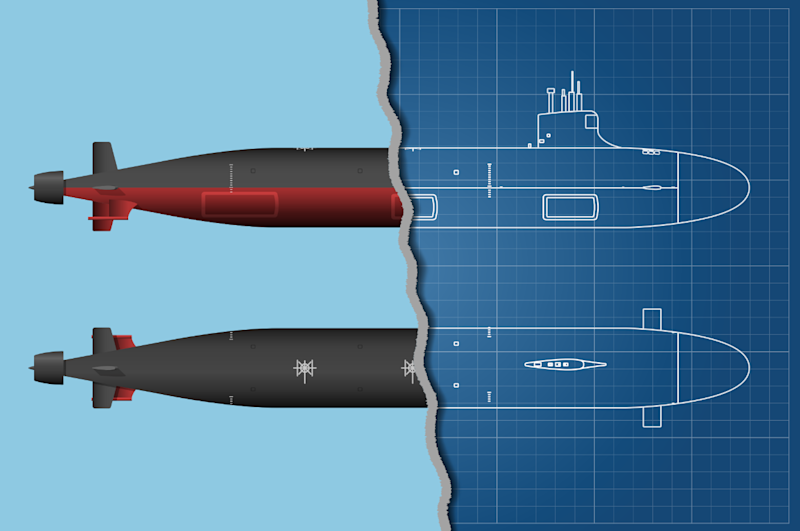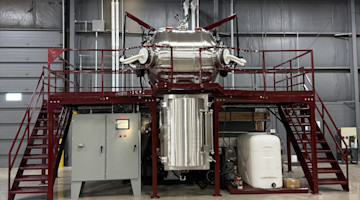I love manufacturing, and I love firearms manufacturing. And what better way is there to celebrate that love than at this past January's Shooting, Hunting, and Outdoor Trade (SHOT) Show 2025 in Las Vegas?
AM: A Permanent Fixture in Small Arms Production
Additive manufacturing (AM) is now firmly established in suppressor mass production, even playing nice with subtractive methods in a hybrid manufacturing process. Powder metallurgy has continued to push the boundaries of AM, enabling more durable and high-performance components that meet the rigorous demands of the industry. This evolution is particularly relevant to the defense industry, where customization, lightweighting, and rapid iteration are critical.
Walking the floor at the SHOT Show, it was clear that AM is no longer just a cutting-edge experiment. Suppressor manufacturers are embracing surface porosity, lattice structures, and specialty alloys to reduce weight while maintaining strength, and the quality of AM parts continues to improve. One exhibitor even described their AM suppressor as “aerospace-grade for the battlefield.” As I thought after the 2023 show: AM in firearm manufacturing is here to stay.
The Rise of Metal Injection Molding
Long dismissed as inferior to forged and billet-milled components, metal injection molding (MIM) is rapidly gaining traction. In the past, MIM’s negative reputation stemmed not from some inherent process inferiority but from quality control issues, tolerance limitations, thickness restrictions, and poorly implemented parts. These issues became readily apparent when companies tried to adopt the process to cut costs: Kimber’s reputation has suffered, and SIG has struggled in recent years with their P320, which depends heavily on MIM.
Today, thanks to the AM industry advancing post-processing software that compensates for shrink and warp when going from a green part that’s near net shape to a finished part, the outlook is improving for MIM. Additionally, advancements in powder metallurgy, particularly trickle-down innovations from cutlery material specialists like Crucible and their various Crucible Particle Metallurgy flavors, have improved MIM’s strength and consistency, establishing it as a viable option for high-performance firearm components. With AM influencing MIM’s “rediscovery,” 2025 could be the year the technology sees widespread acceptance in firearms manufacturing.
In conversations with manufacturers at the SHOT Show, it was clear that perceptions of MIM are shifting. One industry veteran noted, “MIM used to be a dirty word in this business, but with the right materials and post-processing software, it's becoming a serious contender.”
Workholding Innovation: Precision and Productivity
Workholding is getting more complex in the firearms segment. Companies like SMW Autoblok and Royal Products showcased their latest workholding technologies, and Beretta demonstrated how they integrated modern workholding to serve as a “second set of hands” for hand engraving, allowing artisans to achieve unparalleled detail and consistency.
Still, a key challenge remains: cost perception. Many smaller defense job shops experience sticker shock when confronted with the price of advanced workholding solutions. Gene McDonald, CMTSE, the regional business manager for Royal Products, pointed out that while many attendees were excited about the potential for increased efficiency and reduced scrap, some hesitated at the cost.
“It’s an investment, but the ROI is undeniable,” McDonald explained. “You get more consistent results now and open the door for automation down the road.” Companies like Royal Products offer both entry-level stepping-stone solutions for growing manufacturers and high-end automation-ready systems, making growth more accessible.
Workforce Development and Manufacturing in National Defense
AMT members and IMTS exhibitors had a robust presence at SHOT Show 2025, highlighting the increasing overlap between commercial firearms manufacturing and defense applications. As the U.S. Department of Defense expands its industrial base, the manufacturing sector has a pivotal role to play.
Rear Admiral Todd S. Weeks emphasized this connection during his IMTS 2024 presentation, where he outlined the Navy's ambitious plan to build one Columbia-class and two Virginia-class submarines annually. Achieving this goal requires a massive expansion of the skilled workforce and a surge in manufacturing capacity. The Navy is actively seeking partnerships with small and medium-sized manufacturers, providing new opportunities for businesses traditionally outside the defense sector.
The Navy's push for increased manufacturing capacity is complemented by workforce development initiatives, such as the Advanced Training and Defense Manufacturing initiative and the Buildsubmarines.com program. These efforts aim to train a new generation of skilled workers in additive manufacturing, CNC machining, metrology, non-destructive testing, and welding – core competencies essential to both the small arms and defense industries.
The Takeaway
From AM suppressor production to MIM's rediscovery and workholding’s increased complexity, manufacturing technology is rapidly reshaping the firearms industry, and the SHOT Show serves as a critical hub for innovation and collaboration. Industry leaders like 5th Axis, Sandvik, Royal Products, Acme Manufacturing, Renishaw, Blaser Swisslube, Haimer, Rego-Fix, Schunk, and Horn exhibit there, reinforcing the importance of manufacturing to both commercial and defense applications. And as national defense priorities shift, the U.S. Navy's call for expanded manufacturing capabilities presents a significant opportunity for companies looking to enter or expand within the defense sector. Manufacturers that embrace innovation to take advantage of such opportunities will be well positioned for long-term success. And those that don't? They may find themselves buried under a pile of hot brass.
To read the rest of the Workforce Issue of MT Magazine, click here.






